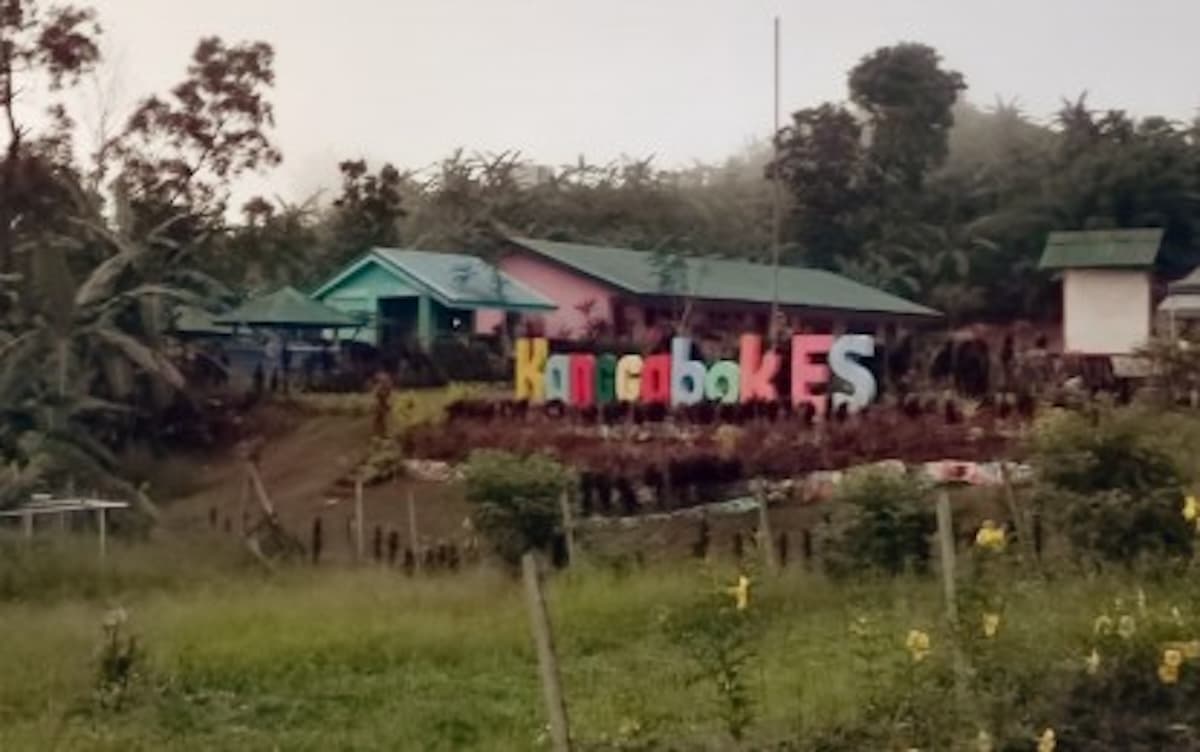Solar power to be used in Negros Oriental remote schools in May polls

LAST MILE. The Kanggabok Elementary School in Sitio Kanggabok, Barangay Nagbinlod in Sta. Catalina, Negros Oriental remains unenergized to date. It is one of the schools to be provided with solar power during the May 12, 2025 elections as it has been identified as a clustered voting site. (PNA file photo by Mary Judaline F. Partlow)
DUMAGUETE CITY — Key officials from the energy sector in Negros Oriental have assured that schools in remote areas that would serve as voting centers in the May 12 elections would have stable and reliable power.
Lawyer Fe Marie Tagle, general manager of the Negros Oriental II Electric Cooperative (Noreco II), told the Philippine News Agency in an interview on Tuesday that a backup plan is in place for unenergized schools, where solar power would be used instead.
“There is a Department of Education and National Electrification Administration partnership to energize the last-mile schools using photovoltaic modules (solar power),” Tagle said.
She noted that eight schools within Noreco II’s coverage area would be provided with solar energy to ensure the elections are not hampered.
These are Apo Island Elementary School and Apo Island High School in Dauin town; Danao Elementary School, Kanggabok Elementary School, and Tubod Elementary School in the remote mountain barangay of Nagbinlod in Sta. Catalina town; Calañan Elementary School in Barangay Bonawon, Siaton; Bokaw Elementary School in Barangay Manduaw, Bayawan City; and Pilipigan Indigenous Peoples Elementary School in Barangay Pal-ew, Tanjay City.
Tagle and Noreco I General Manager Elvin Denoyo briefed members of the Provincial Joint Security Control Center (PJSCC) on Monday during the group’s final meeting on contingency plans for the midterm elections.
Denoyo assured that all areas within Noreco I’s coverage would be provided stable power for the final testing and sealing of the automated counting machines beginning May 6.
Noreco II covers Dumaguete City, Tanjay City, Bayawan City, Pamplona, Sibulan, San Jose, Amlan, Valencia, Bacong, Dauin, Zamboanguita, Siaton, Sta. Catalina and Basay.
Noreco I serves the northern part of Negros Oriental, including Bais City, Mabinay, Manjuyod, Bindoy, Ayungon, Tayasan, Jimalalud, La Libertad, Guihulngan City, Vallehermoso and Canlaon City.
Lawyer Lionel Marco Castillano, Commission on Elections–Negros Island Region (Comelec-NIR) director, who attended the PJSCC meeting, expressed confidence that the conduct of elections in these schools would proceed without serious problems.
“If we were able to do it in the previous elections, then we can also do it this time,” Castillano said.
The National Grid Corporation of the Philippines, which transmits electricity to the cooperatives, assured earlier that there would be no brownouts until at least a week after the May 12 elections, as mandated by law — unless there are “extreme emergencies” or unforeseen events, such as natural disasters.


















